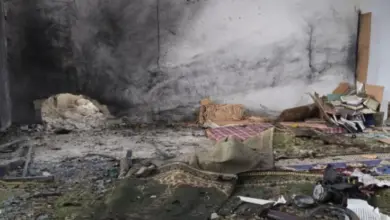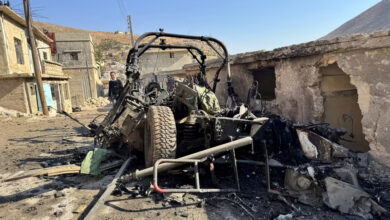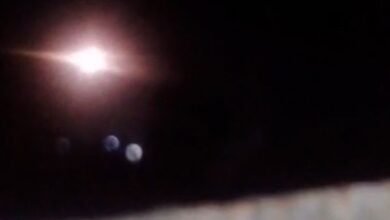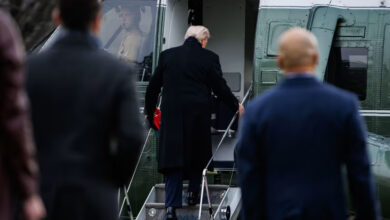Damascus — Security forces continued their bloody crackdown on pro-democracy demonstrations on Friday after protesters took to the streets in dozens of towns and cities across Syria in flagrant defiance of the regime’s deadly campaign of intimidation over the past seven weeks of unrest racking the country.
Regime-affiliated forces reportedly shot dead up to 30 protesters following Friday prayers, after opening fire on demonstrators in Homs, Hama, Damascus, Latakia and Deir al-Zour. More than 580 civilians and 100 soldiers have been killed since the protest wave sparked, rights groups say.
The brutal suppression comes amid escalating international condemnation as European Union (EU) officials agreed on Friday to level asset freezes and travel restrictions on up to 14 Syrian officials. EU governments will also impose sanctions on the regime of Syrian President Bashar al-Assad, a move that follows United States-sponsored sanctions last week.
Video uploaded on Youtube, purportedly from a Friday demonstration in Hama, showed footage of protesters running down a main street and hurling stones. Loud screams are heard as the sound of machine-gun fire fills the air and people run for cover.
Another video, supposedly from Homs and filmed from behind a curtain inside somebody’s home, shows two army snipers on a rooftop about 20 yards away taking aim at unseen targets below.
The authenticity of neither of the two videos can be independently verified.
Syrian security forces also continued their campaign of arbitrary detention on Friday. Rights groups say thousands of Syrians have been arrested in recent weeks.
Riad Seif, a 65-year-old leading dissident and former MP who has been repeatedly jailed in the past for criticizing the Assad regime, was among those detained after midday prayers. He was protesting in the Midan neighborhood of Damascus when apprehended by security.
“Riad Seif’s wife just called me and said he had been arrested,” Radwan Ziadeh, a Syrian human rights activist based in Washington, said. “He was in front of the al-Hassan mosque in Midan when he was detained.”
“I think the main reason they took him is because they don’t want the opposition figures to co-ordinate and form a united opposition.”
Activists also reported shootings in the Damascus eastern suburbs of Harasta and Zamalka, while demonstrators also reportedly took to the streets in Moadamiyah and Daraya — two towns close to the capital which have suffered brutal crackdowns by the army in recent weeks.
A witness told the Associated Press security forces in Duma, located to the east of Damascus, cordoned off the town on Friday, preventing all entry and exit. Another witness reportedly saw tanks being transported by train to Homs.
In the coastal city of Banias, a Sunni stronghold, thousands of people, many carrying olive branches and Syrian flags, chanted for the fall of the regime. The regime responded on Saturday morning by deploying the military in the city, sending tanks to Sunni but not Alawite neighborhoods, a rights campaigner told Reuters news agency.
The move is poised to raise sectarian tensions in the already divided and embattled country. Bashar has appointed Alawites, a Shia sect to which the Assad family belongs that comprises roughly ten percent of Syria’s 23 million people, to top military and security positions. Analysts say the majority Sunni population is largely resentful of the dominant position Alawites claim in the country’s social and economic hierarchy.
Wissam Tarif, executive director of Middle East human rights organization Insan, said the nationwide protest movement – which gained initial traction in the southern city of Deraa in March after the arrest of 15 schoolchildren for spraying anti-regime graffiti – is becoming more determined than ever.
“The protests have spread more than any we have seen in the past seven weeks,” he said. “We counted uprisings in 108 towns and villages across the country yesterday."
“We have seen intimidation. There have been snipers, and a strategy of building a wall of fear. A lot of people are scared, so it’s amazing that people are coming out.”
Mr Tarif added that the situation in the city of Deraa, which has been under an army siege for much of the last two weeks, was still critical. Assad vowed on Thursday to end the military operation.
“The army is still in the old part of town,” he said. “There is no curfew but people are afraid to leave their houses.”
There were also rallies in Qamishli and Hassakeh, both north-eastern cities with significant Kurdish populations. Tariff said he believes the long-marginalized Kurdish political groups, which until recently have declined official endorsement of the protest movement, were now trying to make their voices heard.
“They have protested before,” Tariff said. “But the Kurdish political parties didn’t take part and weren’t calling for their people to protest.”
A spokesman for the National Initiative for Change, an umbrella group of opposition figures inside Syria, claimed Friday’s protests indicate the pro-reform movement is becoming too large for the government to cope with.
“There are now areas of protest which involve shootings and killings, and other areas which are completely peaceful and there have not even been any arrests,” Ausama Monajed said. “It shows that the security forces cannot really concentrate on the whole country. They are almost exhausted.”




